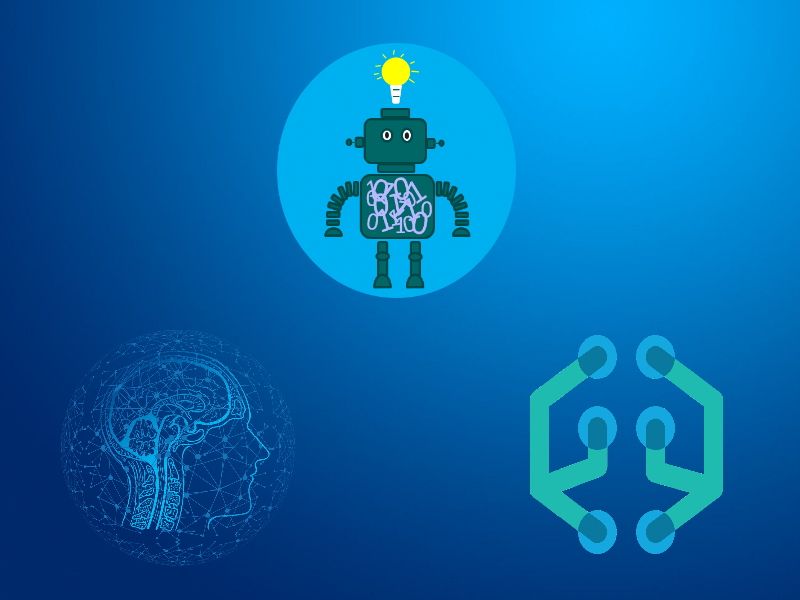With the advancement of technology, everything is becoming more simple and accessible day-by-day. We can see voice assistants like Siri, Alexa, Cortana making our every-day life easier. There are many such examples that can be seen by the application of Artificial Intelligence, Machine Learning, and Deep Learning.
Nowadays, these terms have become popular buzzwords. But do we know what each term means? Let’s understand and differentiate the three most important technologies.
First off, it is necessary to know that Artificial Intelligence, Machine Learning, and Deep Learning are different but interrelated to each other and the base of all the above technologies is an algorithm. So what is Artificial Intelligence?
Artificial Intelligence
Simply put, Artificial Intelligence, as the name suggests is the intelligence created by humans that intends to enable machines to execute logic by replicating human intellect. As the main aim of AI processes is to teach machines from experience, supplying the correct data and self-correction is essential.
The growth of AI has already made an influence on various industries globally, and honestly, the employment of Artificial Intelligence can be limited only by imagination. Every business sees the purpose of the latest technology that enables one to access the creativity of its developer, learn through interesting projects, travel to different locations without leaving a place, and view the actuality through others’ perceptions.
Artificial Intelligence is presumably one of the most innovative and sophisticated discoveries of humankind, and to interpret it, we must understand how it is classified. Based on the abilities of AI to perform various tasks, it is classified into two systems. The first system which is employed more commonly in tech divides AI into three categories:
- Artificial Narrow Intelligence (ANI): This kind of Artificial Intelligence can only perform the operations that it was meant to, which makes its capabilities restricted by human decisions.
- Artificial General Intelligence (AGI): This type of AI has the capability to learn or understand any intellectual task that a human being can. It is still under development.
- Artificial Superintelligence (ASI): ASI is an advanced level of Artificial Intelligence where the computers are likely to surpass the brightest and most skilled human minds.
The second system breaks AI into four types, also depending on the capability to perform human-like actions and the resemblance with human conduct. They are:
- Reactive machines: These are the earliest forms of AI systems that have the minimum capacity. They copy the human mind’s skill to react to various types of stimuli. However, their functionality is not memory-based, meaning they cannot learn from previous experiences.
- Limited Memory: These machines are machines that have the skills of reactive machines and are also capable of learning from past data for decision-making.
- Theory of Mind: These types of machines have not been developed yet. However, it is believed that they will be capable of performing human-like activities based on their requirements, emotions, and ideas.
- Self-aware: Self-aware AI will be the ultimate level in the development of AI. In addition to being capable of understanding human emotions, this machine will have feelings of its own, can make decisions, and come up with potential ideas.
Read more about Machine learning solutions.
Machine learning
Machine learning is a component of Artificial Intelligence. Many consider it as Artificial Intelligence, but it is not true. It is the science of acquiring machines to read, process, and interpret data in order to solve real-world problems. Machine Learning is classified into three categories, namely:
- Supervised Learning: Supervised Learning is the most common model for implementing machine learning operations. It is used widely in applications where there is an accurate mapping among input-output data.
- Unsupervised Learning: Unsupervised Learning algorithms recognize the data depending on their frequencies, compositions, related sections, and other comparable features.
- Reinforcement Learning: The trial and error method is used in this type of machine learning algorithm to produce the output based on the highest performance, which is then compared to detect errors and gain feedback. This feedback is fed to the system to enhance or maximize its performance.
Deep Learning
Deep learning is a field of machine learning that trains machines to perform what comes intuitively to humans. It is the logic behind driverless cars, face recognition algorithm on Facebook, virtual assistants like Alexa, Siri, and so on.
In deep learning, a machine learns to complete analysis instantly from pictures, sound, or text. These models can deliver sophisticated precision, sometimes surpassing human-level achievement. The models are guided by using a broad set of specified data and neural network structures that comprise multiple layers.
Conclusion
The primary differentiation between artificial intelligence, machine learning, and deep learning is that they are not equal but are arranged hierarchically inside one another. The domains of machine learning and deep learning are included in Artificial Intelligence as a whole. We have decades of artificial intelligence research to thank for where we are today. While it is appropriate to mention to both Machine Learning and Deep Learning as AI, it is incorrect to use them instead of AI.









